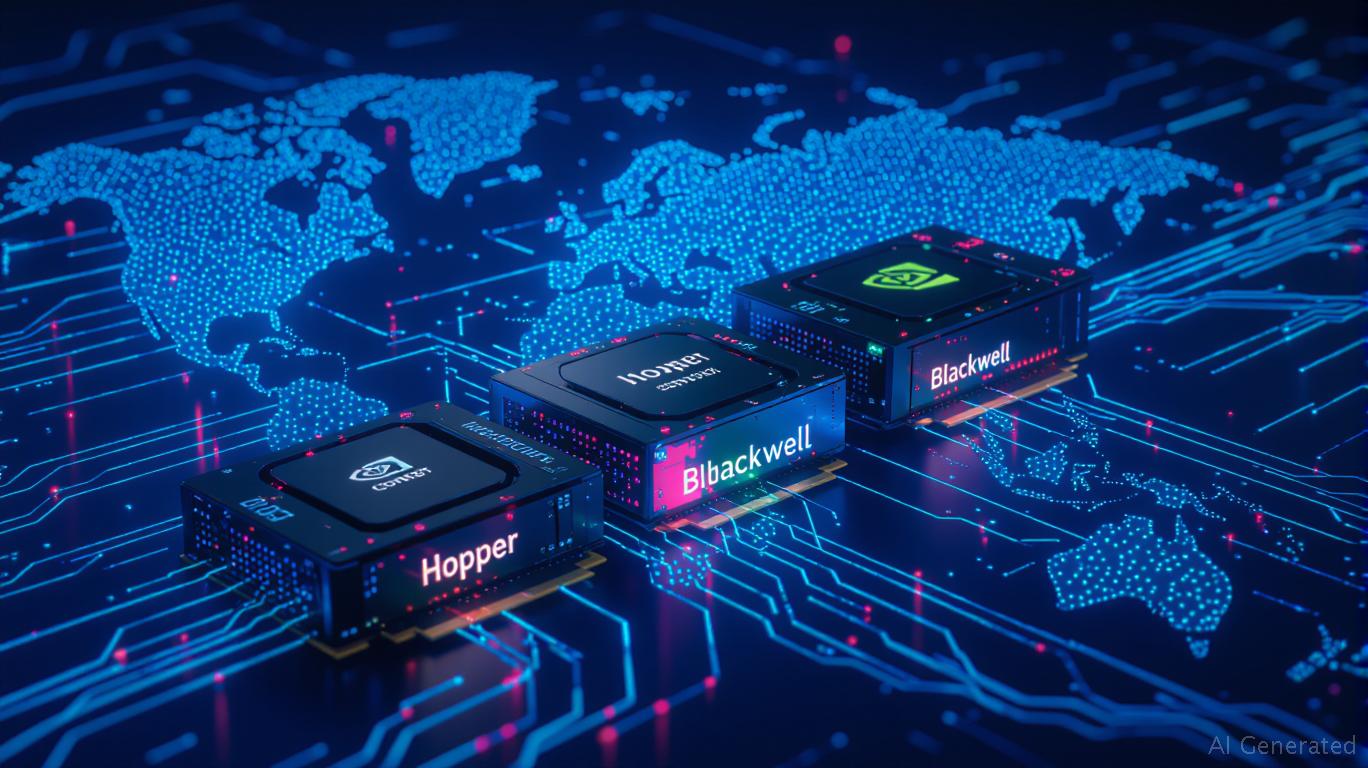NVIDIA's AI Dawn: Is the Tech Rally Built to Last?
The tech sector's AI-driven rally has pushed
to historic heights, with its market cap surging past $3.8 trillion in June 2025. But as the Federal Reserve signals prolonged rate constraints and geopolitical tensions simmer, investors face a critical question: Is this a sustainable boom—or a speculative bubble?
The Fuel Behind NVIDIA's Fire
NVIDIA's Q2 results underscore its AI leadership. Data Center revenue hit $26.3 billion (+154% YoY), fueled by demand for its Hopper (H200) and Blackwell (B200) GPUs. The latter's dominance in MLPerf benchmarks and partnerships with cloud providers like
signal a transition to next-gen architectures. Gaming revenue rose 16% YoY, while AI software platforms like NVIDIA AI Enterprise and NIM microservices expanded enterprise adoption.The company's $15.4 billion in shareholder returns and a $50 billion buyback authorization further embolden investors. But risks loom. U.S. export bans on H200 GPUs to China—a key market—cost NVIDIA $5.5 billion in inventory write-offs and $15 billion in projected annual revenue. The Blackwell ramp must offset these losses, but supply chain delays and geopolitical headwinds remain.
The Fed's Crossroads: Growth vs. Inflation
The Federal Reserve's June 2025 projections paint a cautious picture. GDP growth is now expected to average just 1.4% in 2025, down from earlier forecasts, with inflation sticking at 3%—higher than hoped. The Fed's median path leaves rates at 3.9% this year, declining only gradually to 3% by 2027.
This means tech stocks, which thrive on cheap capital, face a dual challenge: slower economic growth could crimp enterprise spending, while persistent inflation risks reigniting rate hikes. The Fed's “higher-for-longer” stance is a drag on rate-sensitive sectors like semiconductors, which NVIDIA's ecosystem heavily influences.
Geopolitical Crosscurrents
Beyond China, trade tensions are widening. The EU's push for AI sovereignty and India's push to localize chip manufacturing threaten NVIDIA's global supply chain. Meanwhile, U.S.-Russia-EU tensions over AI arms races in defense tech could fragment markets. These dynamics favor companies with diversified footprints—NVIDIA's partnerships with Japanese supercomputers and U.S. cloud giants are a plus—but no firm is immune to supply chain disruptions.
Is This a Bubble or a New Era?
NVIDIA's valuation hinges on two pillars: AI's durability and Blackwell's execution.
- The Bull Case: AI adoption is structural, not cyclical. Enterprises worldwide are overhauling infrastructure for generative AI, creating recurring revenue streams for NVIDIA's software and hardware. Blackwell's performance优势 and ecosystem lock-in (CUDA, Omniverse) ensure long-term dominance.
- The Bear Case: Overvaluation risks loom. NVIDIA's $3.8 trillion cap implies aggressive AI revenue growth for years—a high bar amid macro slowdowns. Competitors like (with its MI300X) and startups (e.g., Cerebras) are closing gaps, while geopolitical fragmentation could erode margins.
Positioning for the Next Phase
Investors must balance optimism with caution:
- Overweight NVIDIA: Its AI ecosystem and software monetization are unmatched. Monitor Blackwell's ramp and China sales workarounds.
- Underweight Rate-Sensitive Tech: Semiconductors and cloud stocks face headwinds if the Fed's path tightens further.
- Diversify Geographically: Favor companies with manufacturing in trade-neutral regions (e.g., Taiwan's TSMC) and AI applications in healthcare/finance (IBM's Red Hat, Microsoft's Azure AI).
- Watch the Fed's Signals: A 2025 rate cut would boost tech; a hawkish pivot could trigger rotation into defensive sectors.
Final Take
NVIDIA's rise reflects AI's transformative power, but its sustainability depends on navigating macro and geopolitical storms. For now, the rally holds—but investors should tread carefully, hedging with defensive positions until clarity emerges on the Fed's path and global trade dynamics.
The verdict? NVIDIA's AI dawn is real—but its sunrise could fade if the world's economies and governments can't keep pace.
Sign up for free to continue reading
By continuing, I agree to the
Market Data Terms of Service and Privacy Statement

Comments
No comments yet